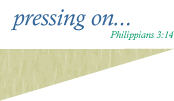
thoughts
the fragmented web
A few days ago, I downloaded a copy of Netscape 4, just to see how my main page looked in it. It was a sight, and I don't mean a good one.
Things were out of place. The type wasn't the right size. The page just didn't look right.
Now, I'm not a great web designer by any means, and I haven't logged the hours doing it that others have. I've just heard horror stories of designers that toil hours on end designing graphics with "invisible" spacers so that they get positioned just so. I've heard of all means of workarounds that they had to implement just so that people could all view the page roughly the same way.
But I could identify with them just a little more when I took a look at my site using Netscape 4.
There are a lot of ways that you can make it so that everyone can view the page the same way. You can write multiple pages and have it so that the browser the user's using is determined and the appropriate page is shown. Or you can just make your page appeal to the lowest common denominator. Nothing fancy; just plain text, maybe a Perl script, maybe a couple of gif images.
The question is this, though: is this what we should be limited to?
The answer to this question, in my opinion, is housed in a much bigger question. What is the Web about? Information? Entertainment? Commerce, or art, or something entirely different?
I would say that the answer is all of these things. And that is where the problem lies.
The tools that were originally made to build the web weren't sufficient for all of these things. After all, who would have imagined back in 1989, when Tim Berners-Lee invented the World Wide Web, that it would be the scene of a multibillion-dollar global market?
And now that the tools are there, we've got problems with browsers. There are many flavors of Netscape and Internet Explorer. Each of these has different levels of support for certain standards. But beyond that, there are text browers, like Lynx (which people do use). There are browsers for those who are visually impaired.
And absolutely none of them support all of the standards fully. The big ones: HTML 4.0, XHTML 1.0, and CSS-1 are pretty well-done in the latest versions. But they're only in the latest versions.
So what do we do? Do we code to standards? (I do...this site uses XHTML 1.0 and CSS-1.) But when we do that, people who use older browsers don't see the page very well. Some people will even have their browsers crash if they view a page that's been coded to standards if certain commands are used.
Do we write multiple versions of the pages? Professional web designers don't like this idea at all, because it's redundancy.
Do we use Flash? Flash is a great tool, when used right, and there are wonderful web sites coded entirely in Flash. But people who can't see can't use Flash at all.
Some people say that we should stick to the lowest common denominator. But this restricts our ability to use the web for commerce and art.
Others say that we should use the standards that we have, and believe that if people can be convinced to upgrade their browsers, we can use them effectively. But some people don't have that option.
What a tangled, fragmented web we've woven...how do we untangle ourselves?
What do you think? Let me know.